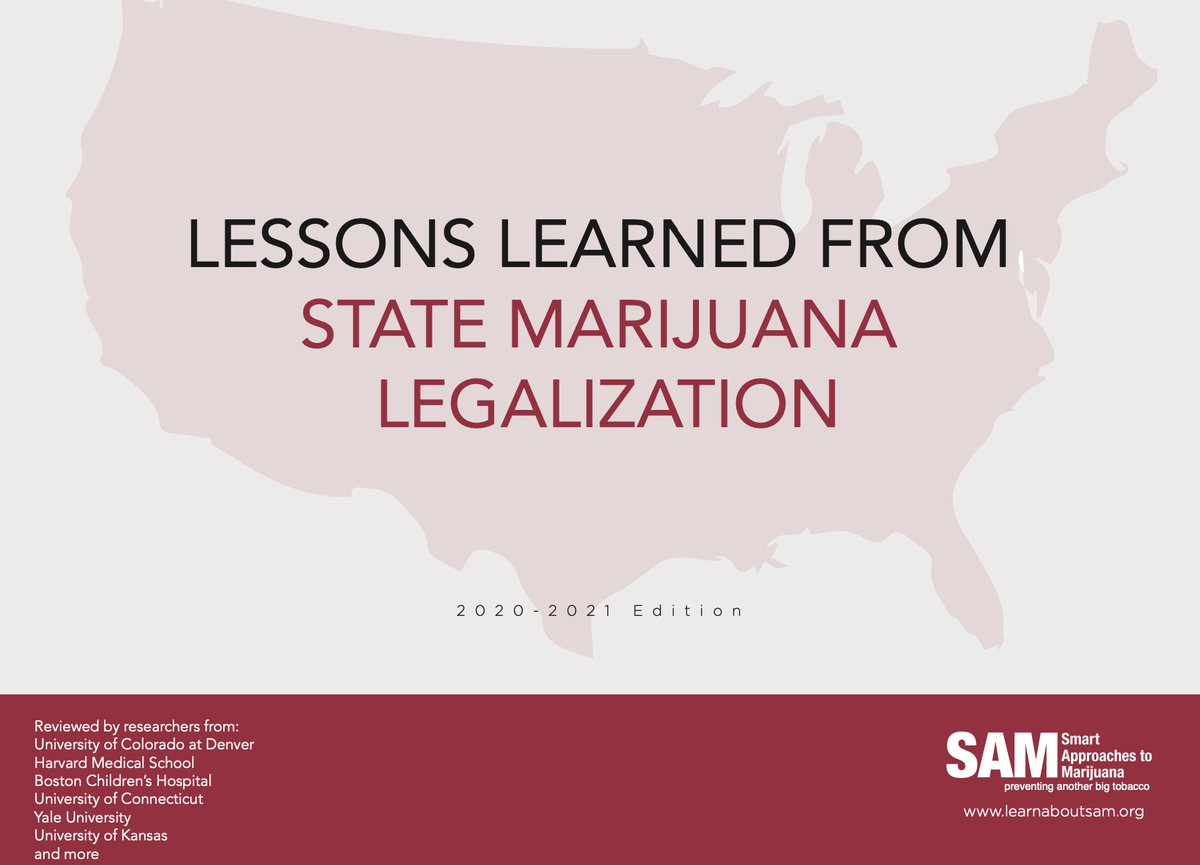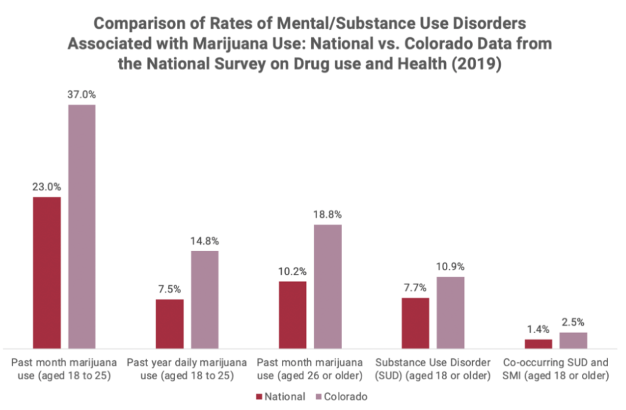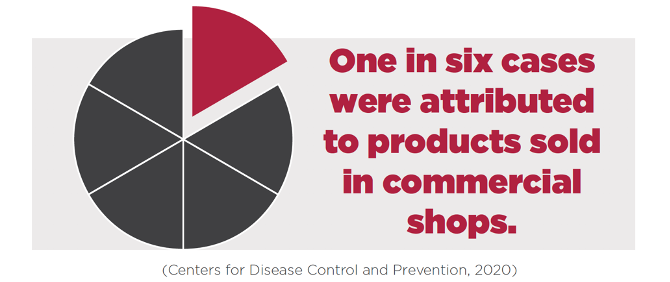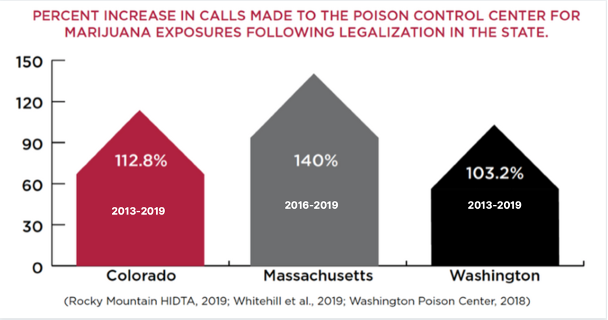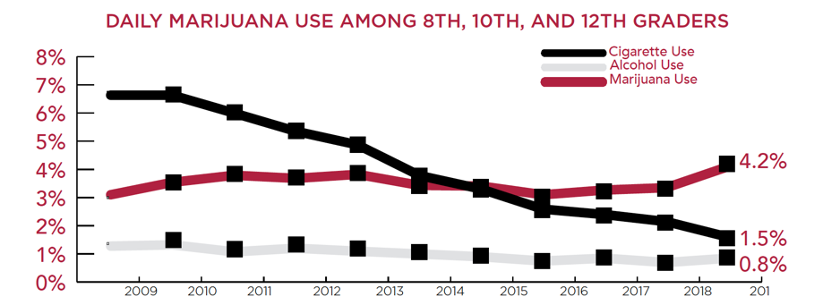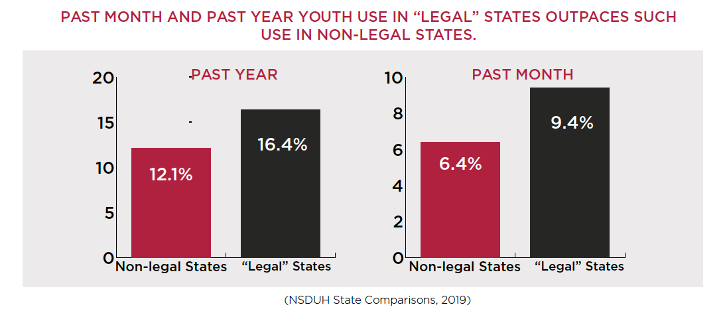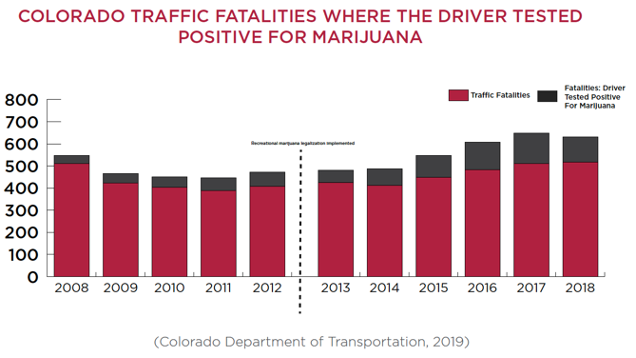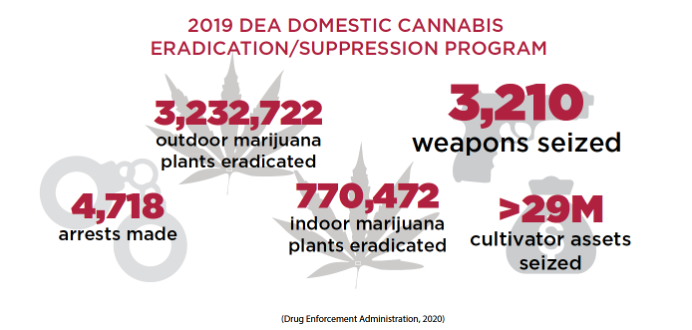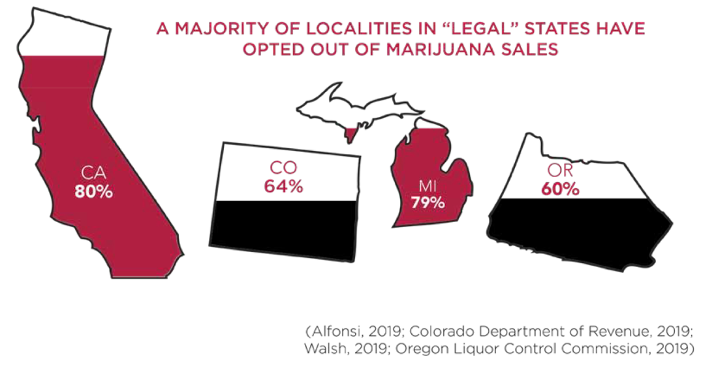Today, we are pleased to announce the release of our fourth annual “Lessons Learned from Marijuana Legalization” Impact Report.
https://learnaboutsam.org/wp-content/uploads/2020/09/2020-Impact-Report.pdf">https://learnaboutsam.org/wp-conten...
https://learnaboutsam.org/wp-content/uploads/2020/09/2020-Impact-Report.pdf">https://learnaboutsam.org/wp-conten...
The report is a comprehensive collection of the latest data and findings that track how marijuana legalization has affected commercialized states.
It greatly underscores the importance of slowing down the rush to commercialize marijuana in the United States.
It greatly underscores the importance of slowing down the rush to commercialize marijuana in the United States.
To kick things off, the report shows that there has been a 25% increase in Cannabis Use Disorder (CUD) among 12-17-year-olds in “legal” states since the implementation of legalization.
The state of Colorado, which was the first state to institute a commercial marijuana market, paints a stark contrast on many data metrics when compared to national averages.
For example, past-month marijuana use among young adults in 2019 was 23% nationally. For Colorado, it was 37%. The rate of substance abuse disorder, SUD among those 18 or older nationally was 7.7%. For Colorado, it was 10.9%
Commercialization has led to the creation of new forms of marijuana use. Notably the use of marijuana vapes – which were at the root of a public health crisis in 2019 that has left nearly 70 dead and resulted in the hospitalizations of 2,739 as of the publishing of this report.
Furthermore, as commercialization has led to dramatic increases in the potency of marijuana products and in their availability, calls made to poison centers in Colorado, Massachusetts, and Washington for marijuana exposures have risen 112.8%, 140%, and 103.2% since legalization.
Youth marijuana use has drastically increased over the last few years, with past-month use among teenagers increasing over 72% from 2018 to 2019.
An average of 10% of teens reported past-month marijuana vaping in 2019. In 2019, 2.4% of teenagers reported vaping marijuana almost daily, exceeding near-daily cigarette and near-daily alcohol use among this group.
Additionally, near-daily marijuana use—as reported by the University of Michigan’s Monitoring the Future (MTF) survey—increased dramatically from 2018 to 2019 with 6.4% of 12th graders, 4.8% of 10th graders, and 1.3% of 8th graders reporting near-daily marijuana use in 2019.
The increase in near-daily marijuana use among 8th graders is particularly concerning: 2019 near-daily use rates jumped 85.7% from 2018 to 2019
Past-year as well as past-month marijuana use among 12- to 17-year-olds in “legal” states increased from 2016/2017 to 2017/2018.
An average of 16.4% of 12- to 17-year-olds in “legal” states reported past-year use in 2017/2018, and an average of 9.4% reported past-month use.
An average of 16.4% of 12- to 17-year-olds in “legal” states reported past-year use in 2017/2018, and an average of 9.4% reported past-month use.
These increases far exceed marijuana use rates among youth aged 12 to 17 in states where marijuana remains illegal
Though regularly touted by industry advocates and lobbyists as a crucial component of social justice efforts, marijuana legalization and commercialization continue to fail to achieve any tangible measure of social justice or equity.
Some of Denver’s low-income neighborhoods have one marijuana business for every 47 residents. Disadvantaged communities, already affected by liquor stores on every corner, could face the added strain of weed shops on every block due to legalization.
Marijuana-impaired driving continues to be a major threat to public safety as a result of legalization and commercialization.
In Colorado, traffic fatalities increased by over 31% since 2013.
In Colorado, traffic fatalities increased by over 31% since 2013.
The rise in statewide traffic fatalities has coincided with a rise in instances of traffic fatalities where the driver tested positive for marijuana (active THC in the bloodstream).
The number of traffic fatalities involving drivers who tested positive for marijuana in Colorado rose from 55 deaths in 2013 to 115 deaths in 2018. In 2018, 18.2% of all traffic fatalities in Colorado involved a driver who tested positive for marijuana.
Commercialization advocates have long argued that legalization will reduce black-market marijuana activity in “legal” states.
However, the legalization and commercialization of marijuana has led to greater black-market activity than ever before.
However, the legalization and commercialization of marijuana has led to greater black-market activity than ever before.
In its 2019 National Drug Threat Assessment report, the DEA found that states with the highest marijuana removals came from states with major border crossings or states with medical or recreational marijuana markets.

 Read on Twitter
Read on Twitter